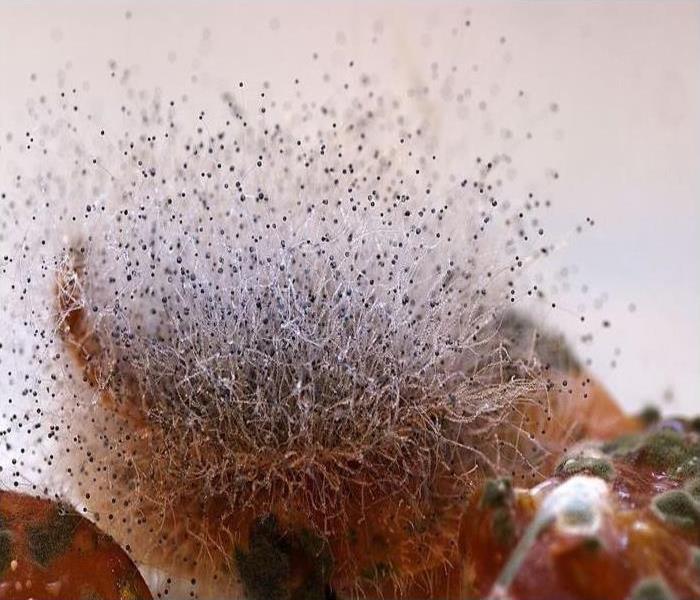Mold 101
9/17/2019 (Permalink)
 Where there is moisture there is mold. Don't wait when you find unwanted water to call SERVPRO of Omaha Southwest!
Where there is moisture there is mold. Don't wait when you find unwanted water to call SERVPRO of Omaha Southwest!
Mold is a type of fungus that consists of small organisms found nearly everywhere. It can be black, white, orange, green or purple. Mold thrives on moisture and reproduce by means of tiny, lightweight spores that travel through the air. When mold is growing on a surface, spores can be released into the air where they can be easily inhaled.
The exact number of mold species is still unknown, scientists estimate that there are thousands. Many of them can affect your business and home.
Here are three of the most common kinds of mold and how they are identified.
1) Aspergillus
Aspergillus is frequently found wherever dust accumulates and spreads to areas like floors, wallpapers and air filters. It typically has a brown or dark green color and certain species are also found on food.
2) Stachybotrys
Stachybotrys earned its nickname, black mold, through its distinctive greenish black and gel like appearance. It is frequently found where moisture dwells such as restrooms or on walls in rooms that have experienced flooding.
3) Cladosporium
Cladosporium colonies can grow in bathrooms, basements and on any wooden surface. Typically, you can spot this type of mold by its green or brown color. This mold is possible to removed by yourself but calling qualified mold experts can assist in its disposal.





 24/7 Emergency Service
24/7 Emergency Service